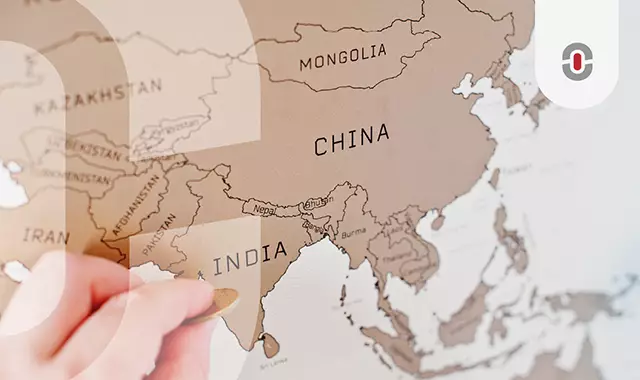Entering the Asian market is an enormous opportunity for every business. The Asian market is vast, diverse and thriving. But while the region offers endless potential, there are some challenges that businesses need to be aware of. First off all, Asia is an enormous and diverse market with thousands of languages and cultures, which means that businesses need to adapt to each and every aspect of the market. That can pose a challenge, as it needs additional resources for market research, translation and localization.
Localization itself can pose a different challenge for businesses and this blog post will answer all questions regarding the ways businesses can avoid the pitfalls when localizing content for the languages of Asia.
What Is Localization and Why Does It Matter?
Whenever people think about translation services they usually imagine converting one language to another – which is true, of course. But in a lot of cases, besides converting a language to another, clients need adapting actual cultural context, or even textual elements like layout or graphics. And this is what localization is – it’s the process of adapting a product or content to a specific language and cultural context. It involves adapting a lot of different elements such as layout or graphics to make the text suitable for the target audience.
Localization can be particularly important when working with Asian languages, which can bring a lot of challenges due to the sheer variety of languages in the region. Having that many languages in a single region means that having a tailored approach to each language and culture is crucial for a business’ success.
Understanding Cultural Nuances in Asian Localization
Asia comprises 48 countries, according to the UN, and each country has its own distinct culture, traditions and languages. Many Asian countries are very diverse internally too. That’s why navigating such diverse market can be a huge challenge for businesses. A lot of companies want to adapt a one-size-fits-all approach when it comes to working in a single region, but the truth is that tailoring the business’ message and strategy is the key to stand out and become successful in the Asian market.
The best option for businesses is to invest their time into understanding the local culture, preferences, traditions and social norms. This might involve doing an in-depth market research, hire consultants or even local staff.
Cultures in Asia differ from country to country, so having a solid knowledge of the customs and cultural nuances is essential for successful market entry. For example, while white is often associated with purity and innocence in the West, it actually represents mourning in China. Being mindful about such details can make a brand blend with the local culture and meet the target audience’s perceptions.
Another thing that a lot of businesses may not consider is humor. While sarcasm and irony are a huge part of Western humor, it does not always translate well in Asian cultures, where the audience might remain unaware of the message, which can ultimately lead to misinterpretation. Let’s take Japanese TV shows for example: While Western audiences want relatability and personal connection on TV or stage comedy, the Japanese audience prefers to escape and prefers what Western audiences see as over-the-top TV shows.
Overgeneralizing Asian Cultures and Languages
Asia consists of dozens of counties, each of which has its own linguistic and cultural complexities. It’s a huge mistake to take a unified approach and treat Asia as a single market. That can lead to inefficient messaging, and sometimes even awkward situations when it comes to branding and advertising. Take for example, Pepsi translation mistakes in Chinese – They translated their “come alive with the Pepsi generation’ slogan as “Pepsi brings your ancestors back from the grave. This is certainly very memorable, but probably not in the best way.
Businesses frequently ignore regional differences within countries. For example, China has multiple dialects, India has 22 officially recognized languages, and the Philippines has over 170 languages spoken across its regions. Neglecting these variations can result in miscommunication and decreased customer engagement.
Partnering with a professional Asian language translator can help businesses avoid such situations and make sure their message is received well.
Relying on Automated Tools Without Human Input
Automated tools can be a huge help to businesses as they save money and time. However, automated translation tools often fail to capture cultural context, humour, and tone, which can lead to mistakes and even offensive translations in some cases. Not only that but it has the potential to weaken the brand experience. Marketing content is supposed to engage the audience, attract new customers, elicit an emotional response etc., but all of that is very difficult to be achieved when done by an automatic tool. In such cases, it’s best to rely on a human translator, who understands not only the language but the culture as well. With a human translator or a human editor, businesses can avoid sounding generic, negative user experience, and lower quality of the translations.
The Role of Asian Language Translators and Agencies
The Importance of Native Speakers
Translators who also happen to be native speakers can ensure linguistic accuracy and cultural relevance. Native translators have not only the language knowledge but aslo the cultural understanding of norms, expressions, dialects and other important nuances that may be missed by a translator who doesn’t know the local culture very well.
Ensuring Accuracy and Consistency
Professional translators and translation service agencies have strong quality control, such as proofreading, cultural adaptation, context verification and so on. This ensures that the translated content maintains the information, while adapting it to the target audience.
Specialized Services for Business Needs
Translation agencies like 1-Stop-Asia offer services tailored to businesses targeting Asian markets, including Asian-to-English and English-to-Asia translations. Such services can help businesses effectively communicate with local consumers, expand their reach, and build trust in foreign markets by delivering content that feels authentic and engaging.
Tips for Successful Asian Localization
Collaborate with Native Linguists
Partnering with professional translation services, such as 1-Stop-Asia, will ensure accuracy as well as appropriate messaging. Our native translators have deep insights into regional nuances, thus helping businesses avoid localization errors.
Tailor Content for Regional Preferences
As mentioned previously, Asia is very diverse – and thus different regions have different tastes, preferences and expectations from brands. Customizing the brand message or marketing content to align with the local culture, communication style, and consumer behaviors will enhance engagement and credibility.
Invest in Thorough Market Research
One of the first steps before entering any new market is to perform thorough market research. This will help businesses understand the customer behavior, needs and values that can drive them to a new product or service. Understanding all of these variables will be an invaluable step in creating content that resonates with the local audience and even help achieve brand loyalty.
Combine Technology with Human Expertise
Using automated translation tools can definitely cut costs and time, having a human expert to monitor and edit the content is still crucial and irreplaceable. Businesses may benefit from a balanced approach that integrates automation and human expertise to maximise their efforts. That being said, human translation can provide invaluable benefits to the final content – cultural relevance and identity.
Key Takeaways
- Cultural sensitivity is crucial when localizing content for Asian markets.
- Professional translation services help maintain linguistic accuracy and cultural relevance.
- Tailored localization strategies enhance engagement and brand credibility.
- Investing in expert Asian language translators and localization services minimizes risks and maximizes market success.
Don’t hesitate to call us at 1-Stop-Asia
Expanding into Asian markets requires a thoughtful localization strategy. Partnering with experienced providers like 1-Stop Asia ensures your content resonates with diverse audiences across the continent.
Expanding your business to Asia requires a lot of effort and a good localization strategy. This is where we can help! We are experienced providers in translation and localization services, and will make sure to make your content resonate with the diverse audiences across the continent.
Our native translators will deliver seamless and culturally sensitive translation solutions for your marketing or branding efforts. Get in touch today to optimize your strategy and unlock the unlimited opportunities in Asia!

